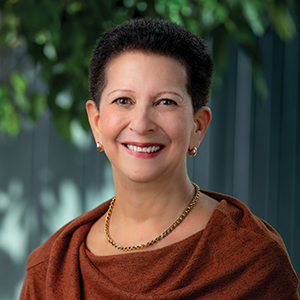Finding skilled workers to fill jobs in the life sciences sector is now harder than ever, but some locations are doing it better than most thanks to innovative thinking and creative programs.
Case in point: the state of Washington. We asked Dr. Leslie Alexandre, president and CEO of Seattle-based Life Science Washington, what her state was doing to make sure it has a sufficient pipeline of workers for the life sciences industries in the Evergreen State, which recently was named the top emerging life science market in the country.
“Our state’s fast-growing life science sectors require a pipeline of workers from entry-level manufacturing technicians through Ph.D. scientists and engineers, as well as regulatory professionals and other commercial talent,” says Alexandre. “Historically, the state has done a terrific job graduating STEM students from our institutes of higher education, although the competition to secure those graduates and post-graduates is fierce and spread among numerous STEM professions. In recent years, our state has made large investments in new STEM infrastructure at our institutes of higher education, with an eye toward serving the needs of our biotechnology, medical device and biomanufacturing sectors.”
She adds that “notable among recent investments have been the Elson S. Floyd College of Medicine at Washington State University and new STEM buildings at WSU Vancouver, UW Bothell, and Shoreline Community College. Shoreline Community College has expanded its biotechnology training programs and added a new biomanufacturing module with on-the-job training for enrolled students. Lake Washington Institute of Technology launched a unique, state-of-the art-medical device assembly training program two years ago, and the University of Washington Bothell School of STEM has begun the process to create a new Center for Biotech Innovation and Training. The Center will connect companies in the biotech, biomedical device, and related sectors with faculty and students to partner in cutting edge R&D and create the pipeline of talent for this fast-growing industry.”
 “Historically, the state has done a terrific job graduating STEM students from our institutes of higher education, although the competition to secure those graduates and post-graduates is fierce and spread among numerous STEM professions.”
“Historically, the state has done a terrific job graduating STEM students from our institutes of higher education, although the competition to secure those graduates and post-graduates is fierce and spread among numerous STEM professions.”
– Dr. Leslie Alexandre, President & CEO, Life Science Washington
Increasingly, states are having to think out of the box to replenish their supply of qualified workers for the life sciences. Jennifer Wakefield, president and CEO of the Greater Richmond Partnership in Virginia, says that reconciling the needs and wants of workers with the needs and wants of companies is the greatest challenge facing workforce development in 2022.
In 2020, 47% of all life science jobs were in highly skilled occupations compared to just 27% for all other industries, according to the U.S. Bureau of Labor Statistics. As one life science industry executive said, “We need technicians as well as people with Ph.Ds.”
A Palmetto State Proving Ground
Another location that is getting the formula right is Greenville County, South Carolina. On Nov. 8, Luxor Scientific LLC, a full-service lab serving customers nationally, announced plans to expand operations in Greenville County, where the firm will invest more than $3.2 million and create 54 new jobs.
Luxor is a full-service clinical lab that specializes in infectious disease, immunology, integrated oncology and genetics, chemistry and hematology research.
“We are excited to continue Luxor Scientific’s growth and investment in Greenville,” said Jay Flanagan, chief strategy officer for the company. “We are ever thankful to Greenville County and the South Carolina Department of Commerce for helping us make this expansion a reality.”
The expansion will increase the firm’s research and development capacity as the 5-year-old company has grown to more than 140 employees, including several world-class Ph.D. scientists. Among their clients are the South Carolina Department of Health and Environmental Control, the South Carolina Department of Agriculture, the U.S. Drug Enforcement Administration, private sector employers, hospitals, universities, clinics and others.
The expansion project is slated to be completed by April 2022.
The announcement comes just after the Biotechnology Industry Organization released its annual report on “How States Can Foster and Expand Biotech Industry Development.” The report on workforce development and quality jobs focuses on the full spectrum of academic and on-site training needs of the bioscience industry in the U.S. Until a decade ago, the U.S. was the undisputed leader in this industry, but Europe and Asia are gaining on America.
“Attracting and retaining a continuing flow of educated (Ph.D., MS, BS, AA) and technically proficient workers is essential to a state aspiring to enhance bioscience industry presence,” the BIO article states. “The creation of 2-year associate degree programs, changes in curricula in colleges and universities to better reflect workforce needs, and outreach to industry for specialized on-site training have all strengthened the communication for industry development in all areas of company development.”
Among the specific state programs cited by the BIO report as being especially impactful are the Portland Community College’s Biotechnology Technician Program in Oregon; New Jersey’s corporate tax credit for companies that hire qualified community college grads; Arkansas’s tax credits to employers for expenses incurred in training biotech workers; the Kansas Economic Growth Act that earmarks $500 million for worker training; the Illinois Biotechnology/Bioscience Training Investment Program; the Massachusetts Biotechnology Center’s BioTeach Initiative; the Georgia Research Alliance; and North Carolina’s BTECH effort that uses tobacco settlement funds to graduate 2,000 students per year.
The five major conclusions of the BIO report are as follows:
- Industry involvement is essential.
- A broad and diverse range of students must be trained.
- Challenges in developing curricula for bioscience workforce and career development must be overcome.
- Difficulties in experiential learning and internships are real.
- Lack of statewide coordination wastes resources.

